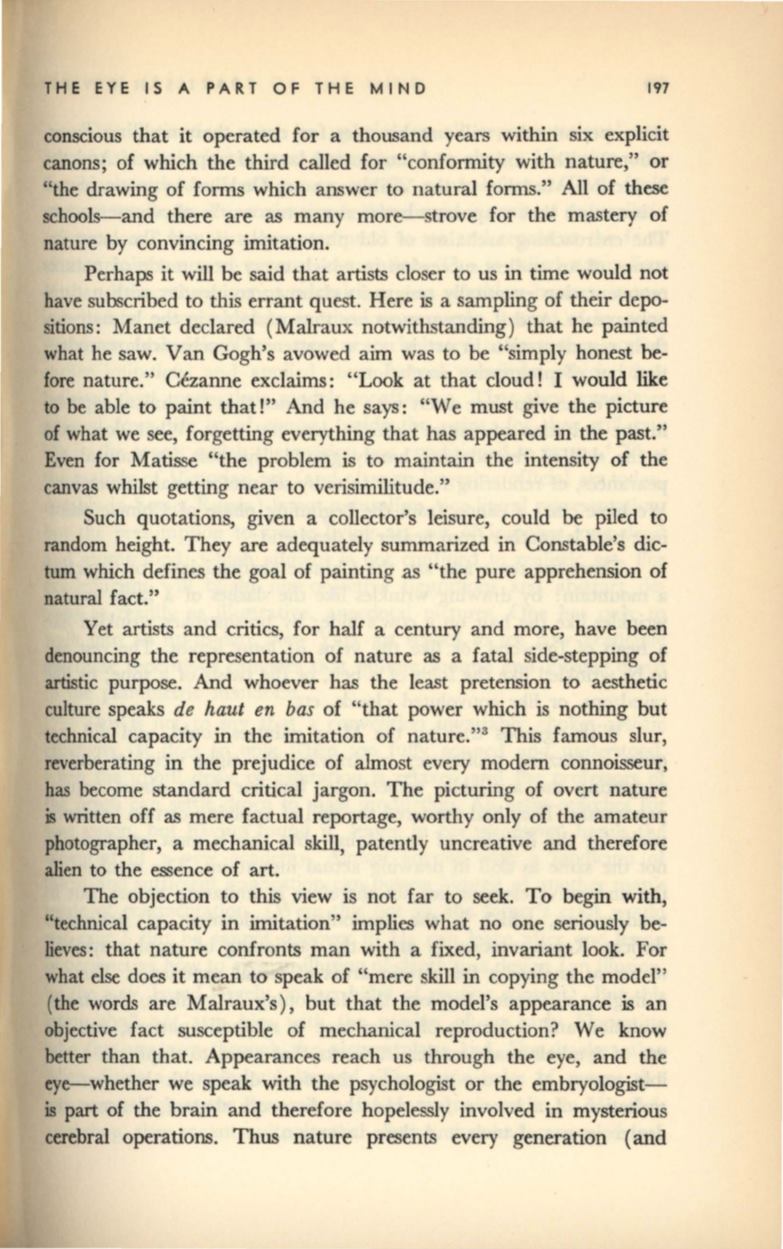
THE EYE IS A PART OF THE MIND
197
conscious that it operated for a thousand years within six explicit
canons; of which the third called for "conformity with nature," or
"the drawing of forms which answer to natural forms." All of these
schools-and there are as many more-strove for the mastery of
nature by convincing imitation.
Perhaps it will be said that artists closer to us in time would not
have subscribed to this errant quest. Here
is
a sampling of their depo–
sitions: Manet declared (Malraux notwithstanding) that he painted
what he saw. Van Gogh's avowed aim was to be "simply honest
be–
fore nature." Cezanne exclaims: "Look at that cloud! I would like
to be able to paint that!" And he says: "We must give the picture
of what we see, forgetting everything that has appeared in the past."
Even for Matisse "the problem is to maintain the intensity of the
canvas whilst getting near to verisimilitude."
Such quotations, given a collector's leisure, could be piled to
random height. They are adequately summarized in Constable's dic–
tum which defines the goal of painting as "the pure apprehension of
natural fact."
Yet artists and critics, for half a century and more, have been
denouncing the representation of nature as a fatal side-stepping of
artistic purpose. And whoever has the least pretension to aesthetic
culture speaks
de haut en bas
of "that power which is nothing but
technical capacity in the imitation of nature."3 This famous slur,
reverberating in the prejudice of almost every modem connoisseur,
has become standard critical jargon. The picturing of overt nature
is
written off as mere factual reportage, worthy only of the amateur
photographer, a mechanical skill, patently uncreative and therefore
alien to the essence of art.
The objection to this view is not f.ar to seek. To begin with,
"technical capacity in imitation" implies what no one seriously be–
lieves: that nature confronts man with a fixed, invariant look. For
what else does it mean to speak of "mere skill in copying the model"
(the words are Malraux's), but that the model's appearance
is
an
objective fact susceptible of mechanical reproduction? We know
better than that. Appearances reach us through the eye, and the
eye-whether we speak with the psychologist or the embryologist–
is
part of the brain and therefore hopelessly involved in mysterious
cerebral operations. Thus nature presents every generation (and


